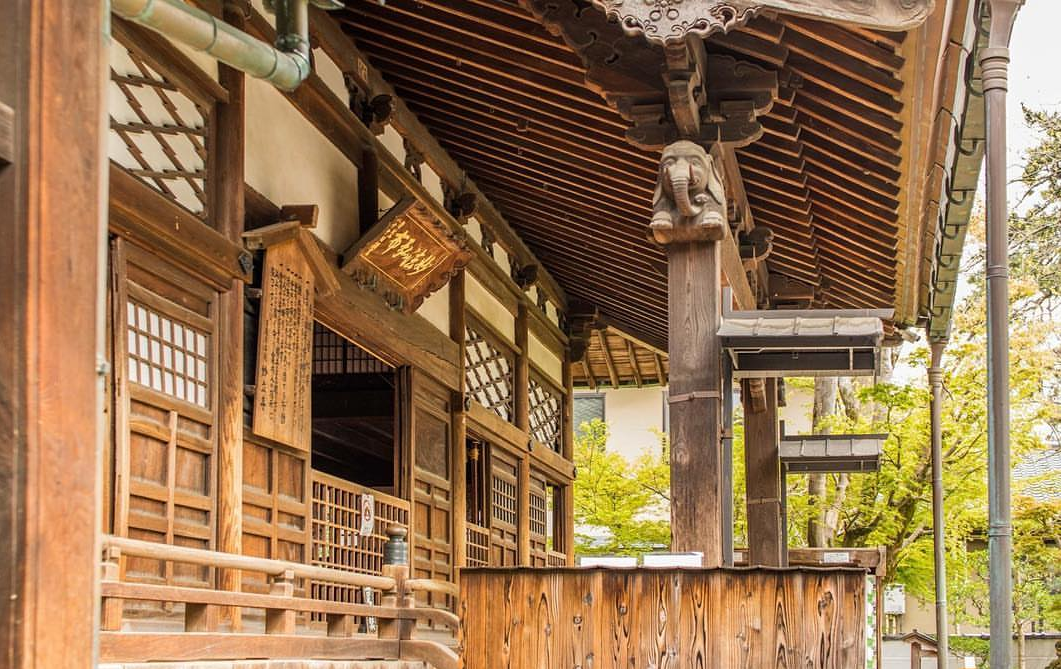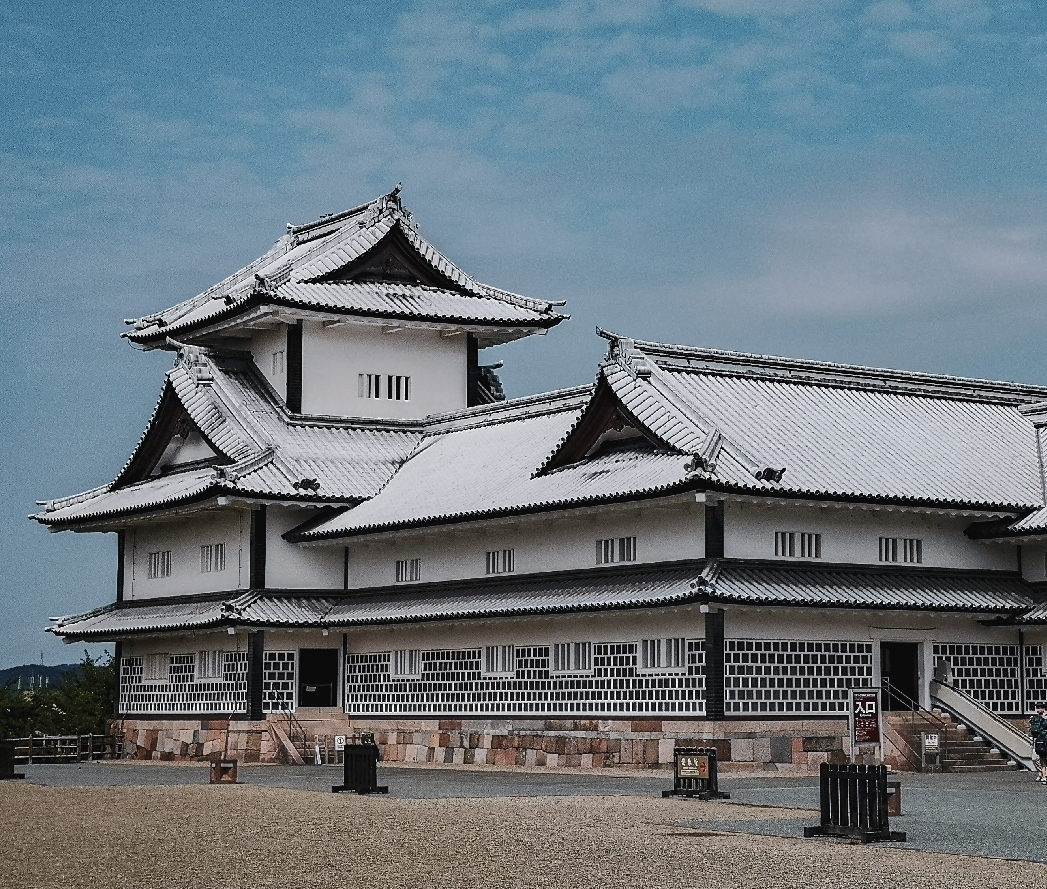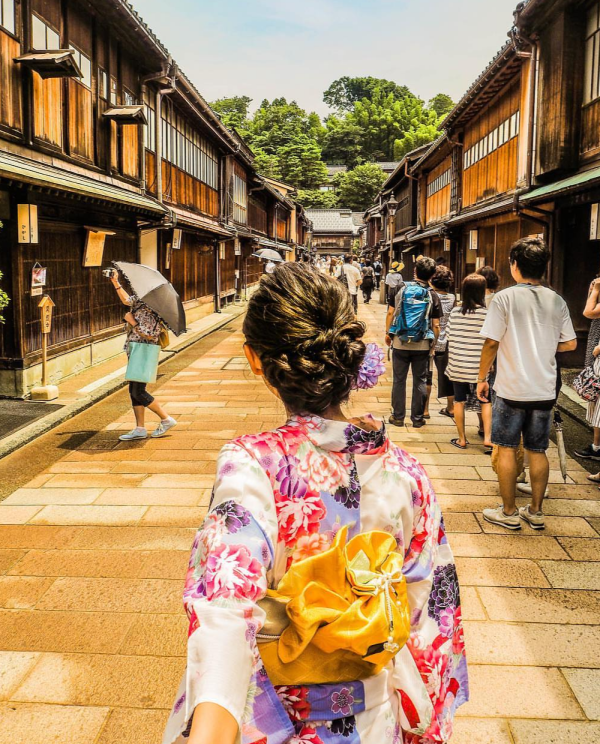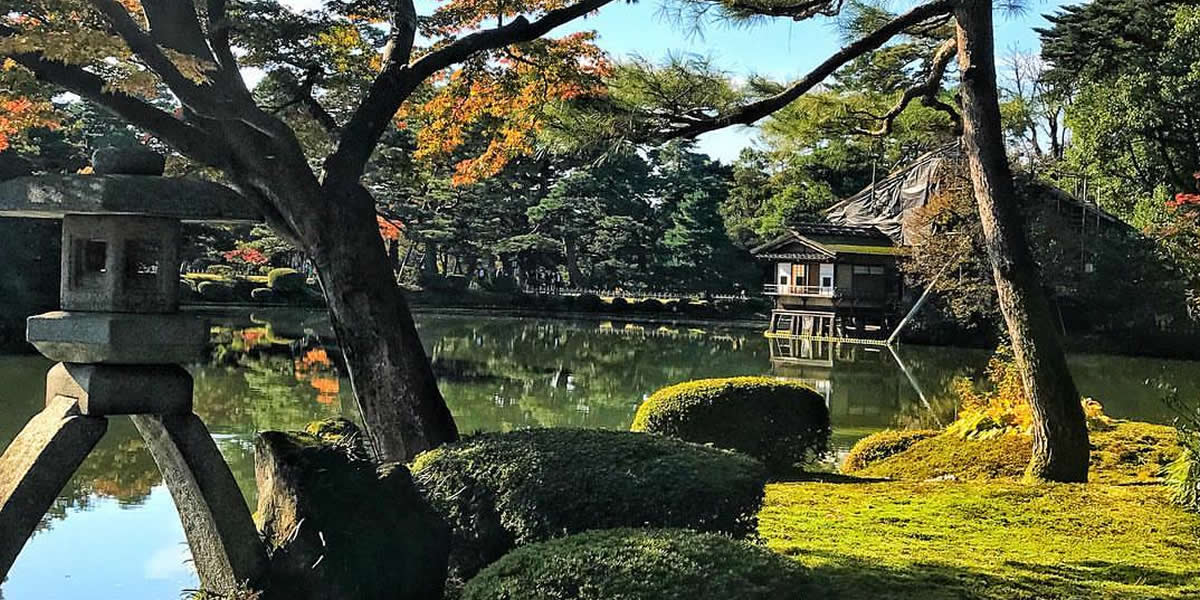This beautiful coastal city is bursting with cultural history, mouth-watering delicacies, and a rapidly growing arts scene. As the capital city of the Ishikawa prefecture, Kanazawa, meaning “gold marshes”, is a popular tourist destination for those visiting the West coast.
Contents
The city was originally ruled by the Maeda clan, whose power was second only to the ruling Tokugawa clan. Under their leadership, Kanazawa’s arts and crafts industries flourished. In 2009, it was recognized by the UNESCO Creative Cities Network as a city of crafts and folk art. Today, 99% of Japan’s gold leaf is produced here exclusively, which is used both for consumption and ornamental handicrafts.
Having avoided much of the devastation of the second world war, many of Kanazawa’s historic buildings and districts remain completely intact and open to the public. Our guide features the top places to truly immerse yourself in the world of samurai, geisha, and talented artisans.
Ninja temple

Ninjadera, also known as Myoryuji, is full of hidden surprises. Whilst not actually associated with ninja at all, the temple was built in 1643 as a defence against potential threats. During the Edo period, the Shogun banned feudal lords from building military structures on their land. To protect themselves from invaders (skirting the law entirely!), the Maeda clan constructed a temple concealing a series of secret networks to be used as an outpost.
Visitors enter what looks like a two-storey building. There are, in fact, four storeys of 29 stairways, along with multiple hidden rooms and passageways. Daily tours are given exclusively in Japanese, however English guidebooks are available that match the information given by the staff.
Adult entry to the temple is 1000 yen and 700 yen for children. Tickets can be purchased on the day of visit, but advanced bookings are recommended to beat the crowds. Reservations can be made by phone, on 076-241-0888. From Kanazawa station, the Kanazawa loop bus will take you to the Hirokoji bus stop (number LL5). From there the temple is a five-minute walk away.
Travel tip: the staff ask that visitors try to keep their volume down whilst the tour guide is speaking. Verbal translation from Japanese to other languages is therefore prohibited, as is photography inside the building.
Kanazawa Castle

Built in 1583, Kanazawa castle was once home to the Maeda family, who governed the Kaga domain (Ishikawa and Toyama). Set in the centre of Castle Park, its proximity to Kenrokuen Garden makes for a leisurely half day excursion.
The castle survived multiple fires through the seventeenth, eighteenth and nineteenth centuries. As a result, many of the buildings were either lost or rebuilt entirely. After the Meiji Restoration, the Japanese army used the grounds as a military barracks. After that, Kanazawa university also had a campus on site until the 1990s.
Since 1996, the local government have worked to painstakingly restore the existing turrets and gates using traditional methods common during the Edo period. For a small fee, visitors can enter the buildings and get a spectacular bird’s eye view from the top floors. Scale models and artefacts that further explain the castle’s history are also kept on display. The interior of Kahokumon gate can be explored for free and contains educational displays on the gate’s construction.
Entry for the paid areas is 310 yen for adults and 100 yen for children aged 6-17. The Kanazawa loop bus stops at Castle Park (number LL9 and RL8). For those with a Japan Rail Pass, there are a few JR buses per hour that run from Kanazawa station. They aren’t as frequent, but the fare is covered with the pass.
Nagamachi samurai district
Not too far from Kanazawa castle (a nine-minute walk to be precise) is the historic samurai district, where the city’s samurai and their families used to reside. Today, many of their homes are open to the public, with some converted into small museums.
Stroll through a space frozen in time; the immaculately preserved buildings and gardens exude an aura of nobility. Indeed, the area gives the illusion of being on the set of a period drama or film.
Among the many samurai homes to visit, the Nomura house and garden is the star attraction. The garden in particular was listed as one of Japan’s top three gardens in 2003, with many of the rooms now arranged to capitalize on the stunning views. The home still contains the Nomura suit of armor, along with family antiques, hand painted screen doors and a delicate ranma wood carving.
Other places of interest include the Kanazawa Shinise Kinenkan, a museum dedicated to the merchant class with an old-fashioned tea house and pharmacy. The Ashigaru Shiryokan is also worth visiting to learn about the lower ranked samurai.
Most of the museums and homes charge a small fee of a couple hundred yen for entry. The Nomura house is the most expensive, at 550 yen for adults, 400 yen for children aged 15-17, and 250 yen for children aged 7-14. The Ashigaru Shiryokan is free to enter, as is the Takada family house.
Higashi Chaya District

Continuing your trip back in time, this exquisitely preserved area is most known for its irresistible wagashi (Japanese confectionary) and the geisha that entertain guests in the local tea houses.
Higashi Chaya-gai, meaning “eastern tea house district” is the most popular of the three in Kanazawa. Many of the traditional buildings have been converted into businesses, however the exterior has been maintained to keep their original features. Similar to the streets of Gion in Kyoto, the wooden houses and rustic lanterns signal an exit from modernity, to a floating world of elegance and refinement.
To watch a geisha performance, Kaikaro tea house organize regular cultural performances entirely in English. Tickets can be purchased online or at the ticket booth on the day. Discounts are available for online bookings. Dinner parties accompanied with geisha entertainment can also be organized online and in advance.
Ochaya Shima is another tea house that offers more than meets the eye. Visitors can explore the daily routine for the resident geisha, with two floors displaying accessories, instruments and tea ceremony items used to entertain their wealth clientele. Of course, a trip to Kanazawa’s cultural center would be incomplete without a trip to Hakuza Hikari Kura. This little tea house is lined in platinum gold foil, with the interior walls layered with 24 carat gold. The building is found behind the Hakuza souvenir store. Head to the Sakuda gold leaf store to try your hand at a gold leaf workshop.
Kenrokuen Garden

Kenrokuen Garden was originally constructed by the Maeda family, and opened to the public in 1874. The name, Kenrokuen, means “garden of the six elements”, referring to the six requirements for a beautiful garden, as told in a classic Chinese poem. The six attributes come in three pairs: space and seclusion, antiquity and man-made creations, flowing water and wide-ranging views.
In keeping with these traditional elements, the garden path winds up and down to secret resting points and tranquil ponds. A peculiar oddity to look out for is the raised roots pine tree that dates back to the 13th century. The tea houses on the grounds offer a serene vantage point, tucked under lush trees overlooking the water below.
The garden is most vibrant during cherry blossom season, and in autumn when the leaves change color. From August to November, the grounds are lit up on Thursdays, Fridays and Saturdays. The Kanazawa loop bus stops at Castle Park. Hokutetsu and JR buses stop at Kenrokuen-shita, which is also a short walk from Castle Park.
For a decadent treat to top of your visit, head to Hakuichi café by the entrance of Kenrokuen. They serve gold leaf ice cream along with other gold themed cuisine.
Getting to Kanazawa
The fastest way to Kanazawa is by train. A one-way journey from Tokyo will take a little over three hours. From Osaka the journey will take three and a half hours. Driving to Kanazawa almost doubles the travel time from Tokyo but is relatively similar from Osaka.
Kanazawa is a city that prides itself on its powerful history and long-established cultural arts. Centuries of preservation efforts have allowed its charms to be shared with the rest of the world. You’ll not want to miss out on this silver screen worthy city.